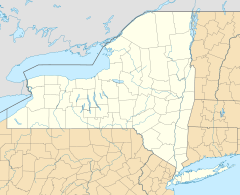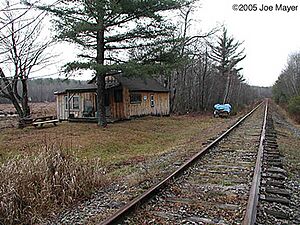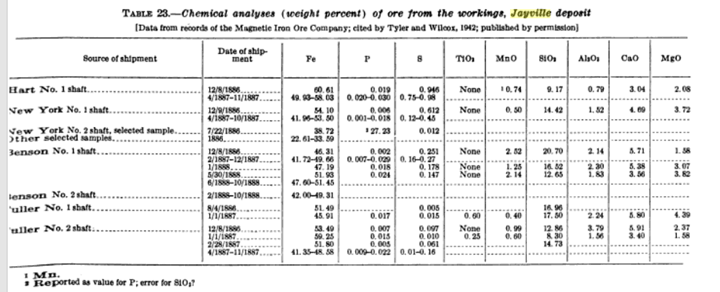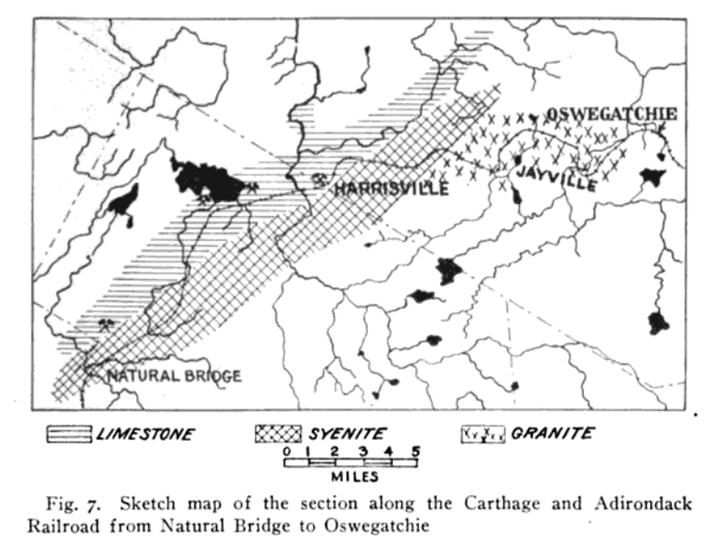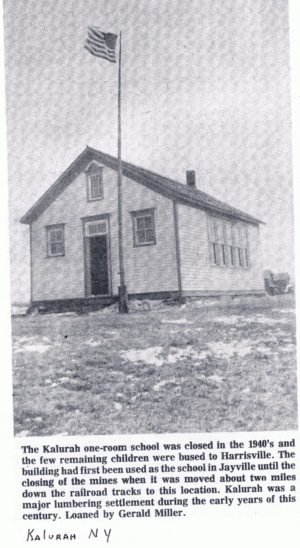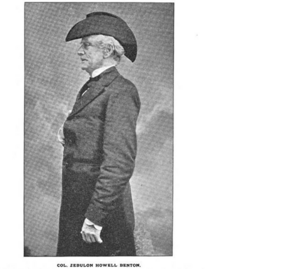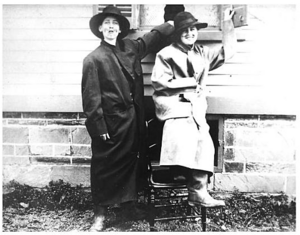Jayville, New York facts for kids
Quick facts for kids
Jayville Centuri
|
|
|---|---|
|
Hamlet
|
|
| Country | United States |
| State | New York |
| County | St. Lawrence |
| Elevation | 1,121 ft (341 m) |
| Population
(2000)
|
|
| • Total | 0 |
| Time zone | UTC-5 (Eastern (EST)) |
| • Summer (DST) | UTC-4 (EDT) |
| Area code(s) | 315 |
Jayville was a small community, also called a hamlet, located in the southwest part of St. Lawrence County, New York, in the United States. It began as a mining town in 1850. The community was built along what became the Carthage and Adirondack Railroad.
Jayville didn't last long because its iron ore was hard to get and not the best quality. Mining soon moved to Benson Mines, about 14 miles away. After mining stopped, other businesses like sawmills kept people busy. But these businesses also didn't last. An attempt to reopen the mines in 1914 failed. Eventually, a fire destroyed the hamlet of Jayville. Today, you can still find parts of the old community near the abandoned railroad station. This area is on New York State land, southeast of Harrisville on Jayville Road.
Contents
History of Jayville: From Mining to Mills
Jayville's story began with mining and later shifted to other industries.
Early Mining Days: 1850s-1880s
Reports say that iron ore mining started in Jayville in 1854. A man named Z.H. Benton opened the property. Not much ore was taken out at first. In 1886, after the Carthage and Adirondack Railroad was finished, the property was leased. This was done by the Bryon D. Benson company. They operated the mines as the Magnetic Iron Ore Co. until 1888. Then, they left Jayville for a better ore deposit at Little River, which is now Benson Mines.
Building the Railroad: 1880s
A very important event for Jayville happened in 1884. New York State decided to build the Carthage and Adirondack railroad. This railroad would connect Carthage to Jayville. It was finished in 1887. Later, in 1889, the railroad was extended to Benson Mines.
Mining was busy in the 1880s. The Magnetic Iron Ore Company spent a lot of money building the railroad to Jayville. They also developed the mines. But they found that the ore from Jayville wasn't good enough to make money. So, the company decided to build a large processing plant at Little River (now Benson Mines). They also extended the railroad to that new location.
Sawmills and Changes: 1890s
During the 1890s, sawmills started opening in Jayville. These sawmills took over from the mining activities. In 1892, legal problems over mineral rights and railroad fees stopped mining in the hamlet. Throughout the 1890s and into the early 1900s, Jayville continued to exist. It relied on railroad traffic and the sawmill businesses.
Final Years: 1900s
In 1914, there was an attempt to reopen the mines. However, this effort didn't last long. Activity in Jayville slowly decreased. Mr. Howard Hughes bought the mine property. He spent a lot of money pumping water out of the old pits. He lost money for about three years and then closed them. The goal was to find a large amount of ore under Twin Ponds. But water kept filling the pits as fast as they could pump it out.
Later Studies: 1940s
In 1941, the Jones & Laughlin Steel Corp studied the area. They used special surveys and drilled eight holes. Most of these holes were 200 to 250 feet deep. Some were even 350 to 450 feet deep. After this study, the company decided that the property wasn't very good for producing large pieces of iron ore.
Jayville's Railroad Connections
The railroad was very important to Jayville's history, connecting it to other towns and industries.
Railroad Companies Serving Jayville
- Black River and St. Lawrence Railway: This company was reorganized in 1883. A mine owner in Jayville bought it. He planned to extend the tracks from Little River to Jayville. This extension was finished in 1889.
- The Carthage and Adirondack Railroad: This railroad was started in 1883. It was meant to finish a line that began in 1869. The line reached Jayville by 1887. It then went on to Little River (Benson Mines) by 1889. By 1896, it reached Newton Falls.
- The New York Central Railroad: This large rail company took over the railroad in 1893. They were responsible for extending the line from Benson Mines to Newton Falls in 1896.
Jayville's Train Station
There was a train station in Jayville. The Jayville stop on the railroad was called 4E. Its exact location was mapped by the USGS in 1913.
Station Workers
It was common for a telegraph operator to work at train stations back then. A telegrapher was a union job in New York State. In 1913, a person named Brother Seamen was the telegrapher for Jayville.
Train Schedule
In 1902, Rand-McNally published the train schedule. Three trains ran through Jayville. The New York Central & Hudson Railroad published this schedule.
Mining in Jayville: Iron Ore and New Methods
Mining was the main reason Jayville existed. People were interested in its iron ore.
Early Mining and Furnaces
The first records of ore being taken from Jayville go back to 1833. At that time, a special furnace was built by the Fuller brothers. This furnace used ores from different mines, including magnetic ores from Jayville. It closed in 1882.
Another use of Jayville's Magnetite ore was in 1855. A furnace called the Alpine Host-blast Charcoal furnace was built in 1846. This furnace used iron from red hematite ore mixed with black magnetite from Jayville. In the 1850s, over 100 tons of ore were taken from the Jayville Mines.
Z.H. Benton was a very important person in increasing mining activity in Jayville. He worked hard to get the Carthage & Adirondack Railway built to connect to the Jayville mines.
Mineral Composition of Jayville Ore
The ore from Jayville was thought to be very high quality. Rich samples of magnetic ore from the Jayville mine were shown at an exhibition in Philadelphia in 1877.
Four samples from the Jayville Mine, taken in 1881, included:
The mine produced tens of thousands of tons of magnetite ore. This ore also contained other minerals like hematite and Fluorite. If the iron deposit were mined again, Fluorite could also be collected.
New Mining Techniques
Because the ore in Jayville had magnetic properties, new technologies were used. One important method was the Magnetic Separation of Iron Ore. In 1895, a special machine called the Ball-Norton electro-magnetic separator was used. It was tested at several places, including Benson Mines, Jayville, and Mineville.
Mine Layout and Structure
The ore in Jayville was found in many different shapes and sizes. It was in "shoots," "lenses," and "irregular bunches." These ore bodies had clear edges where they met the surrounding rock. The rock was mostly a type of gneiss. The ore was close to where the gneiss met a red granite rock.
The mine openings were on the slopes of a low ridge. The pits closest to the station were called Hart no 1 and no 2. Hart no 1 was said to be 300 feet deep. Other pits included New York no 1 and no 2, and Benson no 1 and no 2. Benson no 1 was reported to be 250 feet deep. This pit provided most of the ore that was shipped out.
The way the ore was spread out, in disconnected pieces, was likely caused by the granite pushing into the area. The granite also changed the deposits, adding minerals like garnet.
Recent Prospecting Efforts
Just before World War II, when large pieces of iron ore were in high demand, the Jayville property seemed promising. So, in 1941, the Jones & Laughlin Steel Corp explored the area. They drilled eight holes, some as deep as 450 feet. After this exploration, the company decided that the property was not very interesting for producing lump ore.
In 1947, the USGS (United States Geological Survey) studied the Jayville mines. They found an unknown metallic mineral in ore from two drill holes. In 1950, the USGS investigated this unknown mineral further.
Sawmills: Jayville's Timber Industry
In the early 1890s, as mining became less successful, the timber (trees) in the area caught the eye of investors. Three different groups operated sawmills in Jayville during its history.
Post and Henderson Company
Robert G. Post and Washington J. Henderson started their first sawmill in Jayville in the early 1890s. In the mid-1890s, they produced four million board feet of lumber each year. However, Jayville again lost out to Benson Mines. In 1898, a much larger sawmill was built in Benson Mines. In 1900, the two partners formed the Post and Henderson Company.
W.J. Henderson managed the daily operations of the mill. John Peter Kirch was the superintendent.
J. S. Demott's Sawmill
In 1894, J.S. Demott from Oswego operated a steam-powered sawmill in Jayville.
Mecca Lumber Company
In 1903, Nellis, Ames & Swift bought a large forest area of 7,000 acres around Jayville. They built a big steam sawmill near the center of this land. They also built a railroad switch from the Carthage and Adirondack Railroad at Jayville to their plant. This mill was said to be very modern and could produce a lot of hardwood lumber.
The mill was built in a small settlement called Little Mill. The company renamed it Kalurah. The sawmill was relatively small, producing about 30,000 board feet of logs daily. However, in 1907, it was the seventh largest producing mill in New York State. The Mecca Lumber Company made many railroad ties from the hardwood.
The Mecca Lumber Company stopped operating in 1910. On May 24, 1910, the New York Central Railroad company asked New York State to stop freight and ticket service at the Kalurah station. This ended most of the mill's functions. The sawmill was operated by Alfred Kilbourne until 1920. Then, the land was sold to the State of New York for $45,000.
Education in Jayville
In 1887, a school district was created in Pitcairn for students in Jayville. This was done to meet the educational needs of the mining village.
Later, in the 1890s, this school was known as Jayville School No. 1. George W. Backus was a trustee of the school. He later married Miss Pina Mae Seelya, who was a teacher there.
After the Jayville mines closed, the one-room school building was moved. It went down the tracks to Kalurah, where it stayed until 1940.
Religion in the Community
In the early 1880s, the St. Francis Solanus parish was formed in Harrisville, NY. Jayville was considered a "mission" of this parish. In 1907, several communities, including Harrisville, Kalurah, Natural Bridge, and Lewisburg, formed a larger parish. This parish also included missions in other towns like Fine and Taleville, and stations in Jayville, Edwards, and Fullerville.
Hunting in Jayville's Area
Hunting was an important part of life for people living near Jayville. In 1902, New York State studied the deer population in the Adirondack Region. They measured deer shipments using express companies. During this time, hunters caught 30% more deer in the area. It was estimated that for every deer shipped by rail, four were caught in the woods. In 1902, two deer carcasses were shipped out of Jayville. Neighboring Harrisville shipped 35. It was noted that Adirondack deer, if protected, could grow very large.
Notable People Connected to Jayville
Many interesting people were part of Jayville's history.
- Colonel Zebulon H. Benton: Colonel Zebulon H. Benton was involved in big projects. These included land, mining, and railroads. He invested a lot of money, sometimes over a million dollars. His projects were not just in New York but also in Canada and even South America. The mines at Rossie, Clifton, Jayville, and Alpine are examples of his work. Many believe that the Carthage & Adirondack Railway exists because Colonel Benton worked hard to connect it to the Jayville mines. He owned the Alpine blast furnace and 40,000 acres of land. Zebulon Benton was from Oxbow. He was also a commander during the Civil War. He liked to be called "Colonel" even after the war.
- Hattie Nervin Covey: Mrs. Covey was involved in a notable incident in Jayville, NY, in 1895. She lived in the hamlet with her mother, Mrs. Julia Nervin, who ran a boarding house.
- Charles Kirch: Son of Laura Kirch, he was involved in the 1895 incident with Mrs. Covey.
- Eugene Olen: He was also involved in the 1895 incident with Mrs. Covey.
- George Clark: He was the station agent at Jayville and was also involved in the 1895 incident with Mrs. Covey.
- Stein Ferguson: He was involved in the 1895 incident with Mrs. Covey.
- George W. Backus: He was a telegraph operator and Postmaster in 1903.
- Miss Pina Mae Seelye: She was a teacher in Jayville. George Backus taught her how to be a telegraph operator. She was hired by the New York Central Railroad in 1902 and married Mr. Backus in 1901.
Images for kids


